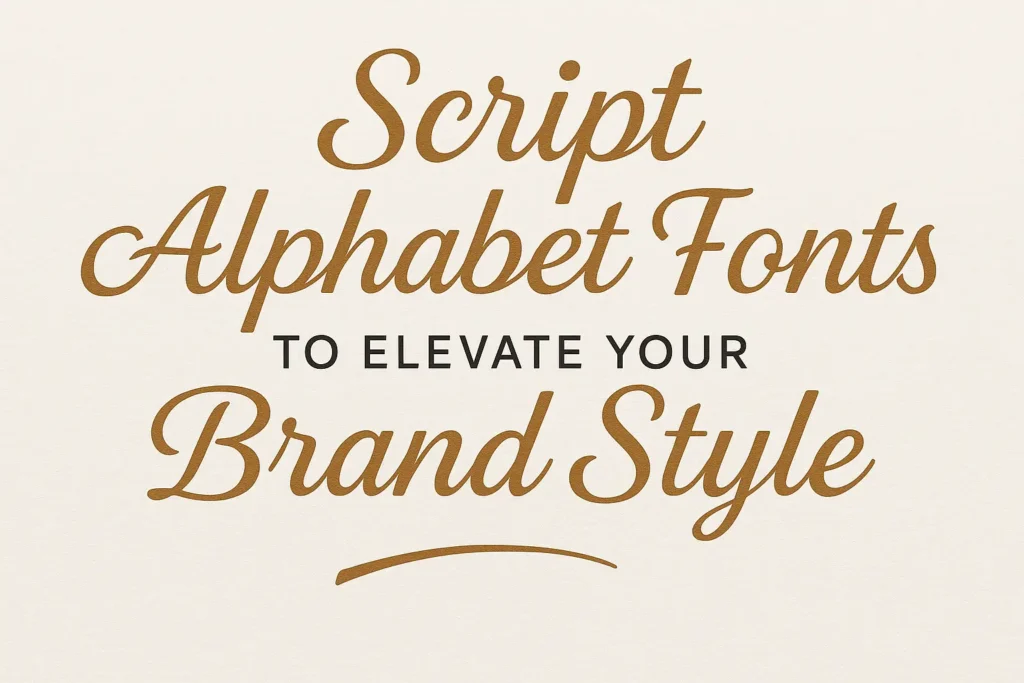Ever feel like your brand is whispering when it should be shouting?
Maybe your website feels a little…blah?
One of the quickest ways to amplify your brand’s voice is through strategic how to use fonts to create a strong brand identity. Choosing the right typeface can transform your message from forgettable to unforgettable.
In this article, we’ll explore the power of typography and how to leverage it to build a brand that truly resonates. We’ll cover everything from understanding font personalities to creating a font strategy that aligns with your brand values. Get ready to unlock the secrets of how to use fonts to create a strong brand identity!
Understanding the Power of Typography in Branding
Typography is more than just picking a pretty font. It’s about visual communication.
It’s about conveying your brand’s personality, values, and message through the art of letterforms.
The Psychology of Fonts
Did you know that fonts evoke specific emotions?
Serif fonts (like Times New Roman) often communicate tradition, authority, and reliability.
Sans-serif fonts (like Arial or Helvetica) tend to feel modern, clean, and approachable.
Script fonts can convey elegance, creativity, and a personal touch.
Consider the feeling you want your brand to evoke and choose fonts accordingly. This is a core element of how to use fonts to create a strong brand identity.
Font Personality: Matching Typeface to Brand
Think of your brand as a person. What are their key traits?
Are they sophisticated and refined? Maybe a classic serif font is the way to go.
Are they playful and innovative? A quirky sans-serif or even a display font could be a great fit.
Understanding your brand’s personality is crucial for selecting fonts that accurately represent it. This is essential when considering how to use fonts to create a strong brand identity.
Building Your Brand Identity with Fonts
Now that we understand the importance of typography, let’s dive into the practical steps of building your brand identity with fonts.
Defining Your Brand Values and Voice
Before you even open a font library, take a step back and define your brand values.
What are you passionate about? What makes you unique?
Your brand voice should also be crystal clear. Are you formal or informal? Serious or playful?
These factors will heavily influence your font choices. This is a foundational step in how to use fonts to create a strong brand identity.
Choosing Your Primary and Secondary Fonts
Ideally, you should select a primary font for your logo and headlines and a secondary font for body text.
Your primary font should be eye-catching and memorable.
Your secondary font should be highly readable and complement your primary font.
The goal is to create a visual hierarchy that’s both appealing and easy to navigate. This is a critical element of how to use fonts to create a strong brand identity.
Font Pairing: Creating Harmony and Visual Interest
Font pairing is the art of combining two different fonts that work well together.
A good font pairing creates visual interest and enhances readability.
Here are a few tips for successful font pairing:
- Contrast is key: Pair a serif font with a sans-serif font for a balanced look.
- Consider the mood: Ensure both fonts evoke a similar feeling or tone.
- Limit your choices: Stick to two fonts to maintain a cohesive brand identity.
Mastering font pairing is crucial for how to use fonts to create a strong brand identity.
Practical Tips for Font Selection and Implementation
Choosing the right fonts is just the beginning. You also need to implement them effectively across your brand.
Readability and Accessibility
Readability should always be a top priority.
Choose fonts that are easy to read at various sizes and on different devices.
Consider accessibility guidelines to ensure your fonts are legible for people with visual impairments.
This is a critical aspect of how to use fonts to create a strong brand identity that is inclusive.
Font Licensing and Usage Rights
Before using any font commercially, make sure you have the appropriate license.
Many fonts are free for personal use but require a license for commercial applications.
Respecting font licensing ensures you’re using fonts legally and ethically. This is a crucial, often overlooked, element of how to use fonts to create a strong brand identity.
Font Consistency Across Platforms
Maintain font consistency across all your branding materials, including your website, social media, and print materials.
This helps reinforce your brand identity and creates a cohesive visual experience for your audience.
Consistency is key when it comes to how to use fonts to create a strong brand identity.
Tools and Resources for Font Inspiration
Feeling overwhelmed? Don’t worry, there are plenty of resources to help you find the perfect fonts.
- Google Fonts: A vast library of free, open-source fonts.
- Adobe Fonts: A subscription-based service with a wide selection of high-quality fonts.
- FontPair: A website that helps you find complementary font pairings.
- MyFonts: A marketplace for discovering and purchasing fonts.
These resources can be invaluable when exploring how to use fonts to create a strong brand identity.
Avoiding Common Font Mistakes
While the right fonts can elevate your brand, the wrong choices can damage it. Here are a few common mistakes to avoid:
Using Too Many Fonts
Using too many fonts can create a cluttered and confusing visual experience.
Stick to a maximum of two or three fonts for a cohesive look.
Choosing Trendy Fonts That Won’t Last
Trendy fonts can quickly become outdated, making your brand look dated.
Opt for timeless fonts that will stand the test of time.
Ignoring Your Target Audience
Consider your target audience when choosing fonts.
What resonates with them? What are their preferences?
Choosing fonts that appeal to your audience can help you connect with them more effectively.
Overlooking Kerning and Tracking
Kerning (the space between individual letters) and tracking (the overall spacing of a font) can significantly impact readability.
Pay attention to these details to ensure your fonts look their best.
Ignoring Font Size and Line Height
Font size and line height are crucial for readability, especially in body text.
Choose font sizes and line heights that are comfortable to read on various devices.
Examples of Brands with Strong Font Identities
Let’s take a look at a few brands that have successfully leveraged fonts to create a strong brand identity.
Coca-Cola
Coca-Cola’s Spencerian script font is instantly recognizable and evokes a sense of nostalgia and tradition.
Google’s sans-serif font (Product Sans) is clean, modern, and approachable, reflecting the company’s innovative spirit.
Apple
Apple’s sleek and minimalist font (San Francisco) reinforces its brand image of simplicity and elegance.
These brands demonstrate the power of how to use fonts to create a strong brand identity effectively.
Conclusion
Choosing the right fonts is a critical step in building a strong brand identity. By understanding the psychology of fonts, defining your brand values, and implementing fonts consistently across all your branding materials, you can create a visual identity that truly resonates with your audience. Don’t be afraid to experiment and find the fonts that best represent your brand’s unique personality.
What are your favorite brand fonts? Share your thoughts and experiences in the comments below!
FAQ
Here are some frequently asked questions about using fonts to create a strong brand identity:
Q: How many fonts should I use for my brand?
A: Ideally, you should stick to two fonts: a primary font for your logo and headlines and a secondary font for body text. Using too many fonts can create a cluttered and confusing visual experience.
Q: Where can I find free fonts for commercial use?
A: Google Fonts is a great resource for free, open-source fonts that can be used for commercial purposes. Always double-check the license before using any font to ensure it’s permitted for your intended use.
Q: How do I choose the right font size for my website?
A: The ideal font size for body text on a website is typically between 16px and 18px. However, this can vary depending on the font and the overall design of your website. Test different font sizes to see what looks best and is most comfortable to read.










Leave a Comment